“Attila Richard Lukacs/ Polaroids/ Michael Morris” “Male: Work from the Collection of Vince Aletti”
It’s been said that clothes make the man. The image of the skinhead, for instance, is one uniform—hyper-masculinity. In the same cartoonish way that, say, Bettie Page’s stiletto heels and stockings or Kenneth Anger’s leather-clad motorcycle boys might turn one’s crank—the skinheads’ neat-as-a-pin attention to detail—shaved head, tight-fitting Fred Perry shirts, tighter jeans and cross-laced Doc Martens boots—add up to an image that has an erotic charge for some. Essentially role play, the skinhead costume is a construct based on a working-class youth movement from late-’60s Britain (see Dick Hebdige’s Subculture: The Meaning of Style for the lowdown) where like most youth-culture uniforms (Mod, Rocker, Hippy, Punk), it’s dress-up. Camp. Drag.
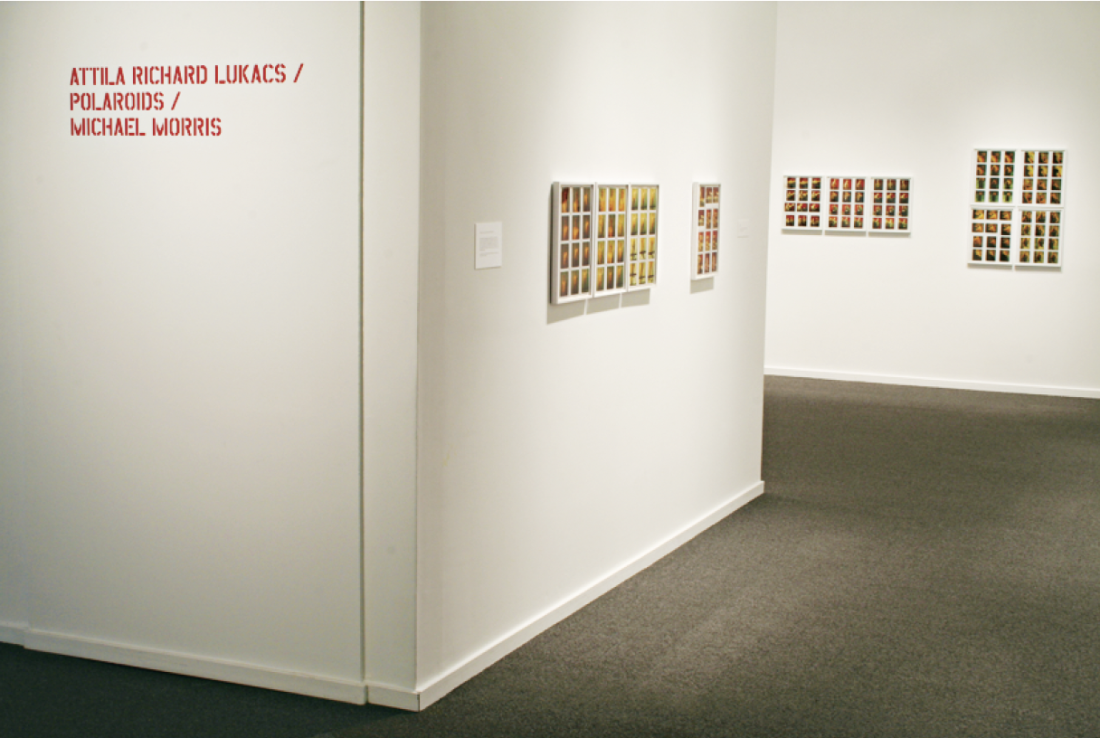
Installation view, “Attila Richard Lukacs / Polaroids / Michael Morris,” 2008. Courtesy Presentation House Gallery, Vancouver.
This was always interesting to me. For me growing up punk rock in Winnipeg, the skins’ wolf pack mentality and reputation for violence took on a different tack. Skirmishes between racist and anti-racist factions were part of the culture where Hammerskins from the States wrecked the party, and the SHARPS (Skinheads Against Racial Prejudice) defended local turf. Both sides were united not only in looks but a mutual love for fisticuffs and homophobia. If you know anyone who was punched out or gay-bashed by a boot-boy, raise your hand.
In the midst of all this, artists like Attila Richard Lukacs and queer filmmaker Bruce LaBruce took this imposing “bad boy” figure and bent it over, repurposing their machismo, sexualising it and revealing the latency buried within the brotherhood. LaBruce positioned the skin as virile object of lust, while Lukacs’s painterly references to art history decked out the idealized Greco- Roman male form in “Boots and Braces” regalia. Subversive acts, they pointed towards something erotically charged but also theatrical: there wasn’t any visible “skinhead” category for the drag balls in Paris is Burning, but perhaps there should have been.
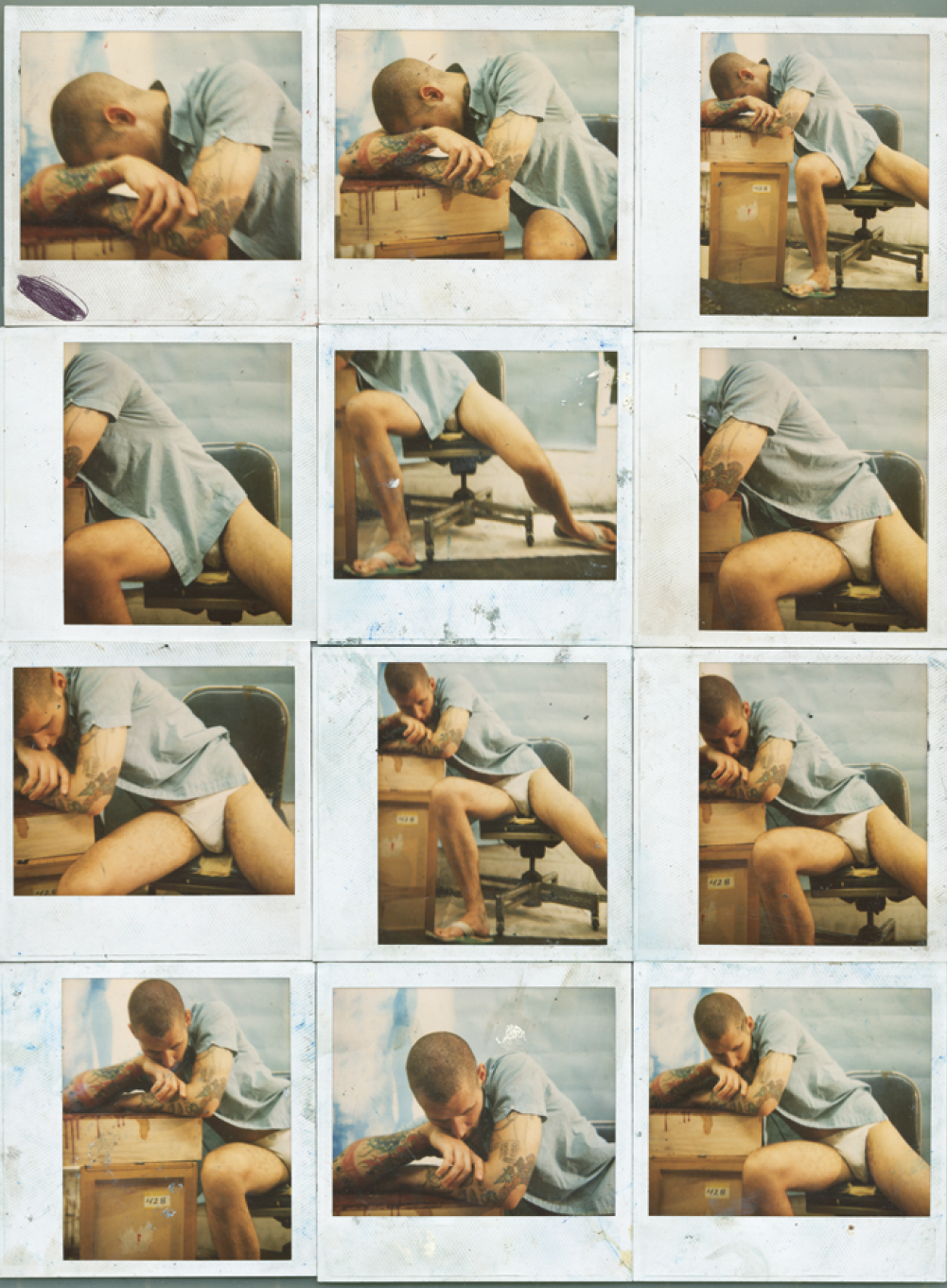
Attila Richard Lukacs and Michael Morris, Studies after Goya, “Disasters of War,” Phil, New York, 2000. Courtesy the artists.
So, Michael Morris’s assemblages of Attila Richard Lukacs’s 600+ Polaroid studies carry a lot more than just images of hot boys with shaved heads. Intended as studies for painted forms, the Polaroids blur together as an indication of process. Their collection and display—gathered, gridded and framed in the white cube— has the effect of going through a photographer’s contact sheets, looking for “the keeper” while discovering the hidden merit of the also-rans.
Due to a naughtiness similar to Tom of Finland, there were warnings about explicit content posted at the gallery entrance. Naked boys lick jackboots, eat out of a dog bowl, wrap themselves in the Stars and Stripes and shoot up. It may seem perverse outside of the canvas/context but similar to the auto-erotic/genderfuck self-portraiture of Pierre Molinier; there’s a furtive thrill to the images: an archive of role play and identity rather than crude pornography that explores the loaded and lewd gesture. A man in a business suit minus pants in a wheelchair giving the Sieg Heil, for instance, says more about the buttons Lukacs wishes to press in the viewer rather than a strictly onanistic fetish on the part of the artist. Albeit satirical, most images are rooted in desire, and some are surprisingly soft, with a similar emotional resonance found in the work of Wolfgang Tillmans and Nan Goldin. Whether it resonates and causes a tingle beyond a casual gallery-goer’s own predilections, well—that’s personal.
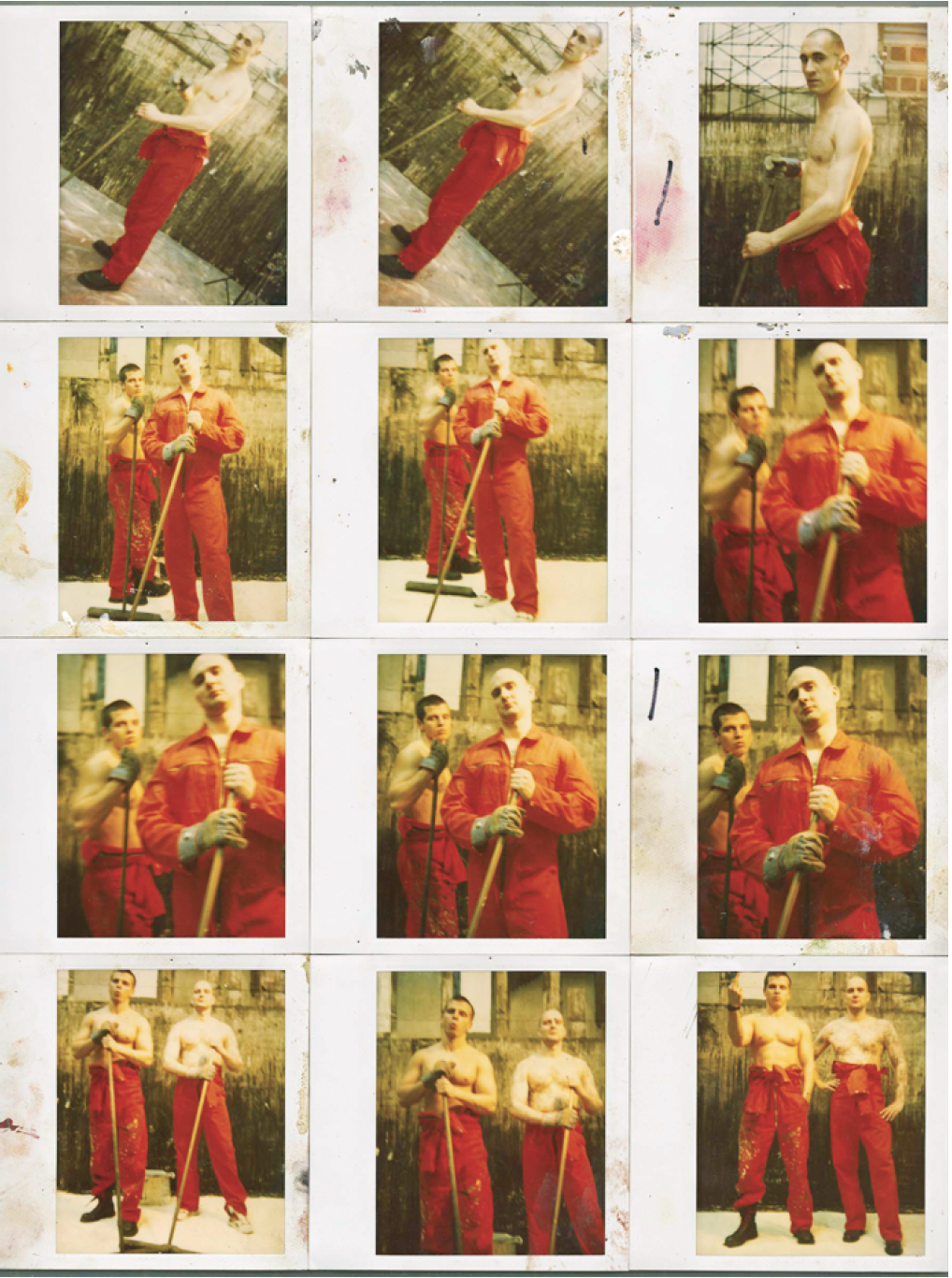
Attila Richard Lukacs and Michael Morris, Studies for Alex & Ingo, “Skins” series, Berlin, 1989. Courtesy the artists.
Vince Aletti’s collection of images negotiates desire as well. A key cultural figure, not just as a curator but as a writer for seminal culture mags like Creem and Crawdaddy! in the ’70s, he also helped birth Disco in Rolling Stone and acted as Senior Editor at the The Village Voice for almost 20 years. Currently the photography critic for The New Yorker, Aletti has amassed an impressive collection of images, a selection of which are on display here.
As Aletti notes in his statement, his collection is rooted in a desire “more soulful than sexual,” with a curiosity about each subject’s inner life. Eschewing standardized and modular gallery presentation, the images hang casually in a series of clusters or sit handsomely on shelves, like a private collection in someone’s drawing room. More approachable than Lukacs’s, the assemblages of the male form take a discursive stroll through photography’s history: old tintypes and cartes-de-visite from the turn of the century hang alongside a Smiths record cover, chromogenic and silver prints, or a skinny, long-haired boy silkscreened onto a skateboard deck. Elsewhere, groups of postcards, second-hand portraits, and news clippings of sports figures furtively touching each other on the field (a gesture of consolation or congratulation—one is not sure) evoke the feel of an artist’s “inspiration wall” in the studio.
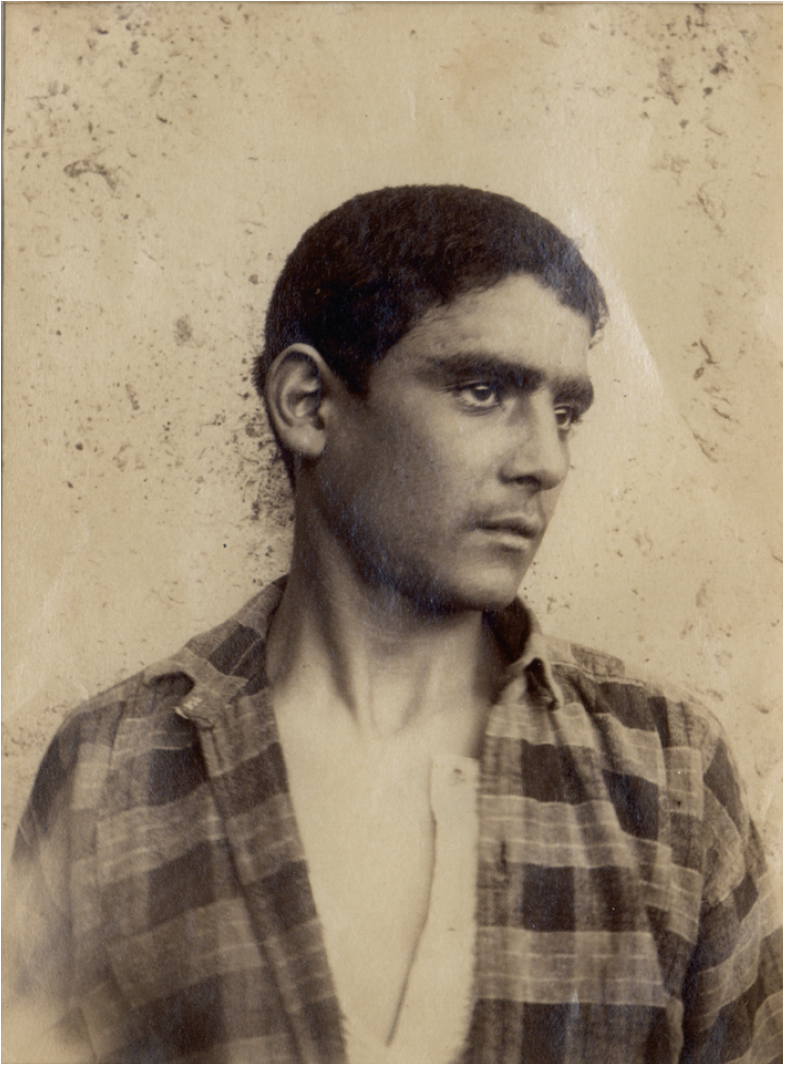
Wilhelm von Gloeden, Boy in Plaid Shirt, c. 1900. Collection of Vince Aletti. Courtesy Presentation House Gallery, Vancouver.
With narrative logic and simple taxonomy suspended, the viewer can wander free of any heavyhanded thematic or conceptual strictures. That’s not to say the exhibit is a hodgepodge either. Scattered among the skinny and the fey we see a “questioning/ history of the Alpha Male” on display with archetypal figures like warriors, soldiers, sailors and sportsmen. Images by mainstays like Alexander Rodchenko, Weegee and Peter Hujar hang alongside newer work by Terrence Koh and Ari Marcopoulos while anonymous mugshots and ethnographic studies of Africans and Orientals remind the viewer of the inescapable lineage of photography’s function as an institutional and colonial tool: here is the world as ordered by and/or constructed for larger powers.
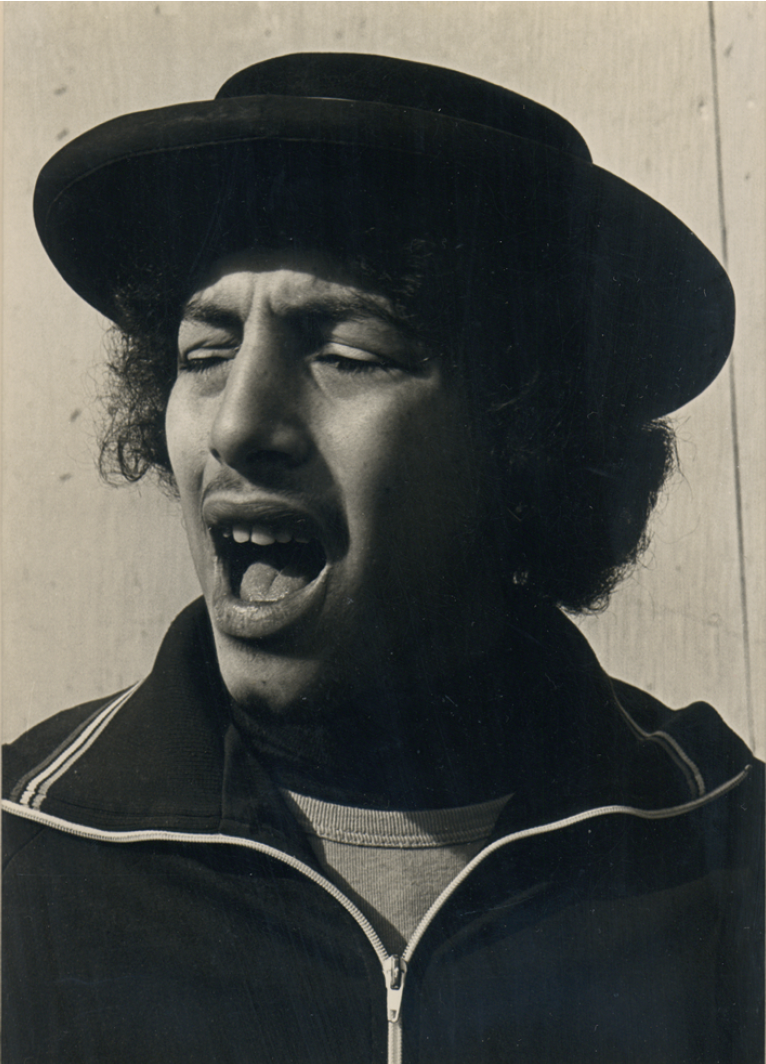
Jim Hamilton, Coney Island Gang Member, 1977. Collection of Vince Aletti. Courtesy Presentation House Gallery, Vancouver.
Impressions bounce off each other—some erotic, some unremarkable, others harrowing; I kept returning to Larry Clark’s Runaway, California, 1974. Here, a young blonde teen lies on his back, naked, his eyes confronting the lens—apprehensive, communicating the confusion and fear of any messed-up kid on the run. What resonates, though, is the position of the person behind the lens: Clark is standing above him, powerful, rendering the youth all the more prone and vulnerable. Here the male gaze is stripped bare and is a testament to photography’s fascinating quality: a glance from the subject/object says more than a novel could and, compared to the other images, reveals desire—predatory, in this case—through the clicking of the shutter. Eros is present but Thanatos is not far behind, if you believe in that sort of thing. Stan Persky put it well: “Desire orders itself with ruthless tyranny,” and this exhibit shows the different approaches in negotiating it via all participants—photographer, collector and viewer. ■
“Atilla Richard Lukacs / Polaroids / Michael Morris,” and “Male: Work from the Collection of Vince Aletti,” were exhibited at Presentation House Gallery, North Vancouver, from June 28 to August 3, 2008.
Christopher Olson is a frequent contributor to Border Crossings, Vancouver Review and Front magazines.

